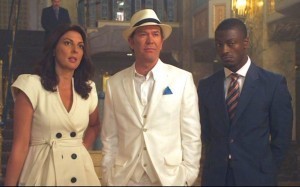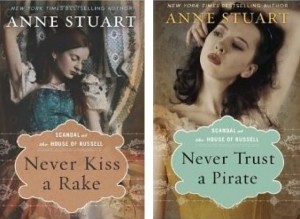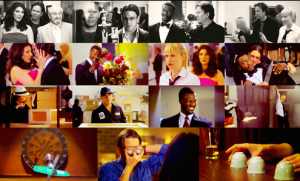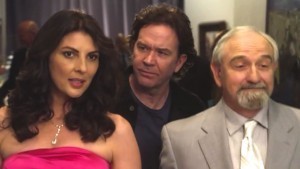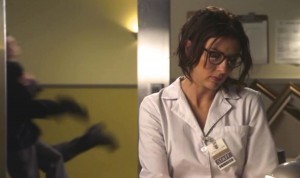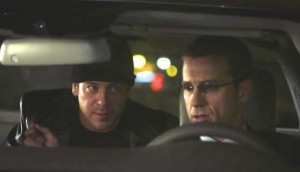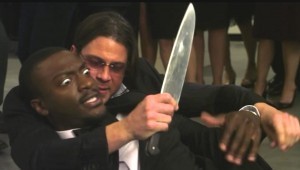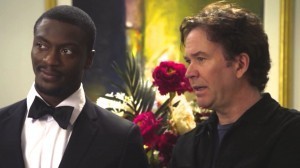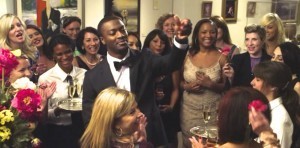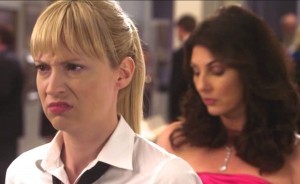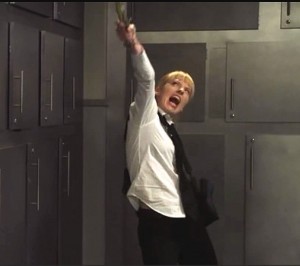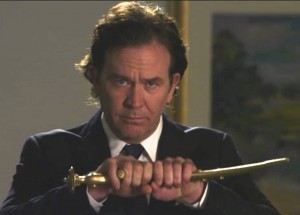Jennifer Crusie's Blog, page 267
June 12, 2014
Sign Up For the Next McDaniel Romance Writer’s Program
McDaniel College’s Romance Writing Program is a five-course (introduction, structure, character, unity, and publishing) program that focuses on writing romance fiction. I’ve taught it for two years, and it’s been amazing how much I’ve learned. Yes, I know I was the teacher, but spending months talking about romance writing with smart people who respect the genre and who are working hard to write it has taught me as much as I taught them. The friendships formed in the program are long lasting (see Eight Ladies Writing), and the tools acquired help already good writers make the stories they love better. Now in its third year, the McD program has a great new teacher, Alisa Kwitney, a terrific writer who’s also a former graphic novel editor, and who’s bringing a new level of professionalism to the program (because, let’s face it, I am erratic and opinionated). Here’s what you need to know:
Reading the Romance, the first course in McDaniel College’s online, asynchronous five-course romance writing certificate program, begins this August 18, 2014. Readings will focus on different subgenres and forms of romance as well as on story and scene structure, but there will be a good amount of writing, too: Students will get to work on their romance novels and receive prompt and constructive feedback.
The instructor, Alisa Kwitney, received the Horgan Prize for writing at Wesleyan University as well as a scholarship of merit from Columbia University’s MFA program. Her thesis novel, Till the Fat Lady Sings, was called “A delicious confection, as tart and spikey as a lemon meringue pie,” by Newsday and “a compulsive read” by Upstairs, Downstairs author Fay Weldon. Alisa went on to work as an editor at DC Comics, where she worked on The Sandman with Neil Gaiman (Stardust, American Gods, The Graveyard Book) and discovered Mike Carey (X-Men, The Felix Castor novels, The Girl with All the Gifts). In addition to writing comics (including the Eisner-award nominated series Destiny), Alisa’s novels have been published by Avon, Atria, Ballantine and Marvel and include The Dominant Blonde, which is listed on Dear Author’s Top 100 Romance Novel list.
“I’ve always loved genre,” says Alisa. “When I was in Columbia’s MFA program, I felt as if most of the other students were reading a steady diet of New Yorker stories, but I was reading science fiction and horror and comics and romance. Now all of these other genres have become socially acceptable, or even fashionable. Yet when the New York Times runs a big book section on summer reading, there’s no mention of romance. Or else NPR will run an article with the headline, “Romance Novels Sweep Readers off Their Feet with Predictability.” That article began with the statement, ‘One thing that you have to understand if you’re gonna get into writing romance is that the things that are valued in that genre are not the same things that are valued when we read something like literary fiction.’ That’s just plain wrong, and it feeds into a misconception that writing a romance novel is easy and that romance readers aren’t discriminating. Writing a good romance novel requires just as much work as writing a so-called literary novel – but it’s worth it, because romance readers are as discerning as they are passionate about the books they love.”
You can see why Alisa and I are pals. If you have any questions, please sent them to Alisa at akwitney@gmail.com or Pam Regis at pregis@mcdaniel.edu. If you put them in the comments, I’ll give them a head’s up, but you’ll probably get a faster answer by going straight to the source(s). Also try the McDaniel webpage for the course; it has links.
This really is an amazing program. If you’re writing romance and you want to learn the tools to write better romance, if you want to talk about writing romance with people who take it seriously, if you want to forge relationships with other writers for support, brainstorming, and networking, there’s no better place to do it than the McDaniel College Romance Writing Program and no better person to study with than Alisa Kwitney.

Questionable: Identifying Character Goals
CateM asked:
How do you figure out what a character wants when it’s not glaringly obvious? I thought a character wanted to do his duty so he can get home, but that’s not it, and I know that’s not it. When you feel something is off with what your character wants, but you can’t quite verbalize it yet, how do you (or other story tellers you know) shake it loose so you can move on with the rest of the rewrite in a productive (ish) way?
Sometimes you just have to write to it. The don’t-look-down draft, the first draft is really about discovery, so you have to stay open to what happens when you write.
But it does help to have some direction, especially on protagonist goals so . . .
What happens at the climax?
Ideally, you’ll know the last big scene, the big protagonist vs. antagonist scene, the place you’re writing the whole story to get to. What happens in that scene? Whatever they’re fighting over, that’s your protagonist’s goal.
If you don’t have your climactic scene in mind yet, try . . .
What happens when the book’s conflict starts in the first scene?
(If the book’s conflict doesn’t start in the first scene, cut everything that happens before the conflict starts.)
What is the protagonist fighting for in the first scene? If that’s not his story goal then how is that emblematic of his or her larger goal, how does it foreshadow the larger goal? Who’s the antagonist in that first conflict? If it’s not the story antagonist, how is he or she analogous to the story antagonist or how does he or she foreshadow the story antagonist? The seeds of your main characters goals and conflict are planted in the first scene when the conflict starts, the scene that sets up the climax where the story struggle is finally resolved.
If you’re not sure where your story starts . . .
What happens at the turning points, the big scenes spaced throughout the story to turn the story in a new direction?
Look at the goals at each of your turning points. How do they echo or relate to each other, how do they build to the final conflict, how can you conflate them so that they’re part of the struggle for the main goal?
If you’re not sure about your climax, where the story starts, or what your turning points are . . .
What’s his motivation?
What’s the reason he’s in this story at all? Why is he or she struggling? Why doesn’t he or she just give up and go watch TV? What’s at stake? Sometimes you can reverse engineer the goal from the reason the protagonist is fighting. Just make sure it isn’t a traumatic event from his past or something else generic. He’s fighting for something right now; what’s motivating him to start fighting right now?
If you’re not sure about your climax, where the story starts, what your turning points are, or what your character’s motivation is . . .
You’re still in discovery. Keep writing, going deeper into your protagonist’s head. Make sure you’re writing him or her in conflict, not in sittin’-and-thinkin’ scenes or chat, because true goals show up under pressure, not in thought or casual conversation.

June 11, 2014
Questionable: How Much Research?
Raquel asked:
Is there such a thing as too much research for a story?
Yes.
It’s too much research when you feel that you must know absolutely everything about every aspect of your story, and because of that, you never actually work on writing the story.
It’s too much research when you feel you can’t write a scene because you don’t know enough about some of the details in it. Write the scene and fix the details later.
It’s too much research when you feel obliged to put all of the stuff you learned into the story itself because you worked hard on that, damn it, and somebody should notice.
In short, it’s too much research when it screws up writing the story.
How do you avoid too much research?
Get a general knowledge of whatever it is you’re researching. GENERAL knowledge, not in depth, enough to get started writing.
Write.
Encounter a place you need to know something. Make a note and keep writing.
When you’re done writing for the day, look up whatever it was that you needed to know. Make a note and fix it when you sit down to write the next day.
If you love what you’re researching, consider non-fiction. The truth is, 99% of what you know about your subject is not only unnecessary to your story, putting it in there will hurt the story. So unless you really want to be an expert on rat-catching in the eighteenth century, get a general knowledge of how rat-catching works and then go write your book.

June 10, 2014
Got Questions?
Anybody have a question about writing they’d like my opinion on, always keeping in my that it’s my opinion only? Put it in the comments, please.
If not, it’s more pictures of dogs. You have been warned.

Questionable: Deep POV
This is the last Questionable until somebody asks something else. I put it to one side because the answer is so fuzzy and I wanted to make it more concrete, and then I lost it in the draft folder. So apologies for the delay to Courtney who wrote:
I would love for you to talk about writing in deep POV.
I think that I know what deep POV is but I struggle with drafting my stories that way. I inevitably end up having to fix most of the POV in revisions. So, my first question is how to get deep POV in the first draft? And then my second is, in revisions, how to check that I’m staying in deep POV. Thanks!
First, you may not naturally write in deep POV, and if not, don’t mess with your own rhythms. Second, the degree of intimacy in third person POV is on a sliding scale, it’s not either deep or shallow, it’s how far into the third person point of view you want to go. My position on deep and shallow POV is that it doesn’t matter as long as you stay in one person’s head. Headhopping is not shallow POV, it’s a bad thing to do. Having said that . . .
Deep Point-Of-View describes how deeply into the POV character’s experience the reader is drawn. Regular POV uses words that let the reader know somebody is telling her a story: Jane thought, Jane decided, Jane felt, etc. Deep POV just puts what Jane thought, decided, and felt on the page so that the wall between the reader and the character disappears and the reader becomes the character. Put another way, deep POV is writing third person limited POV as if it were first person.
For example, regular POV might present an exchange like this:
“I don’t want you to go,” Jane said politely, but she thought, Go.
“Well, it doesn’t seem as if you want me to stay,” John said.
Jane thought he sounded like a whiny little kid and decided she’d had enough. She handed him his hat.
“I just want you to be happy, dear,” Jane said and then thought, Somewhere else.
Deep POV might read like this:
“I don’t want you to go,” Jane said politely. Go.
“Well, it doesn’t seem as if you want me to stay,” John said.
What a whiny little kid. Enough of that. Jane handed him his hat. “I just want you to be happy, dear.” Somewhere else.
The prevalent style today is deep POV, which isn’t that surprising because we’ve been moving into more and more intimate storytelling in general since the eighteenth century. As the individual has become more and more important in society, our point of view characters have drawn closer and closer to the reader. HOWEVER, none of that matters to the individual author. You have to follow your own instincts on POV, telling the story the way it feels right to you, and that may include moving up and down the scale of depth in POV in one story, going deeper into your POV character at moments of great stress and emotion and pulling back when the character’s focus is less. (Please note, that does not mean moving from third person limited to third person omniscient. Mixing those gives you the worst of both worlds without giving you anything valuable in return.) My fiction has been described as written in deep POV, and yet I use “she thought” all the time. I think much of it is the perception of how close the reader is to the character rather than the mechanics of POV itself.
As for the second part of your question, checking your POV, just make sure you’re always in third limited. That is, there’s nothing in the scene that the POV character wouldn’t think or see. No thinking, “Oh, there’s my best friend Sally” since the POV character knows Sally’s her best friend and therefore it’s not notable. No thinking about how golden her own hair is. No reporting what other people think as she walks by. Stay in your POV character’s head and in the now of the story, and you’ll be fine.
In the end, there is no rule about deep POV, it’s just a closer analysis of how third person limited is used in a story. There’s a good discussion of Deep POV by Beth Hill on the Editor’s Blog if you want more detail, but don’t get hung up on how you’re doing it in your story. There are many more important aspects of writing to obsess over than this one.
Standard Disclaimer: There are many roads to Oz. While this is my opinion on this writing topic, it is by no means a rule, a requirement, or The Only Way To Do This. Your story is your story, and you can write it any way you please.
Note: There will be a post following this asking if there are any new Questionables. If you have one, please put it there, not here, so I can find it. Thank you.

June 8, 2014
Leverage Sunday: The San Lorenzo Job: Turning Points
Leverage had five seasons, or as I think of them, four acts and an epilogue. That means that for me, the season finales were all turning points, events that picked up the series over-all story (and the community) and turned them in a new direction.
The finale of the first season was the wonderful double “First and Second David Jobs,” the first episode destroying the team and scattering them, and the second bringing them all back together as each one voluntarily returns to bring down the bad guy, making the breaks stronger at the mend because they each chose to mend the breaks. Nate’s a drunk, Sophie’s lied to them, they’re all loners but that community, that family is too important to desert. At the end of Season One, the Leverage team knows they’re not there for expediency, they’re there because they want to be there.
That turning point spins them into their second act where, now that they’re invested in the community, they have to face its problems, most notably Nate and his drinking, which is why the second season finale episodes “The Three Strikes Job” and “The Maltese Falcon Job,” bring the team again to the point of disintegration. Nate’s alcoholism combined with his need to win puts them all in so much danger that nemesis Sterling offers Nate an out to save him. The problem: the out is just for Nate; his team goes down. Nate goes behind the team’s back again and cons everybody so that, at the end, the team escapes on a helicopter, mad as hell at him for not making them part of the decision, and he bleeds into the pavement as he’s arrested, saying the words that will set him free: “I’m Nate Ford, and I’m a thief.”
And that turning point spins them into their third act where they call Nate to account and begin to work, not as a team with a central leader, but as a family that cooperates. Once the sense of Nate’s authority has been torn down, they can finally find the security they need to establish permanence. Nobody talks about walking away any more. And since the community is now established, each member can reveal more about his or her past–Parker in “The Inside Job,” Hardison in “The Scheherazade Job,” Sophie in “The King George Job,” and Eliot in “The Big Bang Job,” the first episode of the finale–and come to terms with it. The security of knowing who they are and where they belong helps them all understand where they’ve come from. There’s a lot of growing up in Season Three for everybody, including Nate and Sophie.
And that’s why “The San Lorenzo Job,” the final episode of Season Three, is such turning point: When arch-enemy Damien Moreau escapes to the tiny country of San Lorenzo where he controls the government, Nate doesn’t say, “Here’s what we’re going to do,” he says, “Please.”
In full, Nate says, “Now Moreau is sitting in San Lorenzo, a country with no extradition, with his own private security, and he’s going to wait this out until it blows over. But he will be back, I guarantee it. Now we’ve been in this situation before and I pushed you into it . . . . so I’ve pushed you, I’ve tricked you, I’ve lied to you. So now, I’m just going to ask you. And if any of you, any of you, say no, then it’s done. We don’t do it.” Then after a long pause. “Please.”
The next scene is the team planning the con, which means it’s a brand new world: majority, aka the community, rules. Compare that to “The Nigerian Job,” the pilot in which Nate gives orders, controlling a fractious bunch of loners who don’t want to be together with the sheer force of his authority, holding himself above them because they’re criminals and he’s an honest man. It’s an amazing transformation, and everything in this episode shows how far they’ve come and how much they’ve changed. Eliot’s estimation of Parker as completely insane has changed so much that when she sings to determine how far beneath the street they are, he just accepts that she’s right. Where Sophie used to con Nate to convince him to do what she wanted, now she just does it: he tells her not to join their candidate on the podium and she walks up anyway and becomes the Evita of San Lorenzo, saving their con. Over and over again, each member does his or her thing, and the others accept it as normal, natural, and valuable. They’re a winning team.
But their win here is a turning point, a crisis point, not a climax. They’re so good now, they’ve attracted attention. People know who they are; hell, they stole a whole country. They’ve lost one of their big advantages, and now they’re going to have to work in plain sight. Worse than that, now they’re marks. Everybody’s going to want to get in on their success. And that’s what spins them into the fourth act, the season where they deal with a powerful financier who works behind the scenes to cash in on their jobs, trying to lure them into partnership with him and when that doesn’t work, trying to bring them down.
There’s another aspect to “The San Lorenzo Job” that’s also a turning point: Nate and Sophie wake up together. That means that they’re going to be negotiating the long, slow burn of their relationship on a different level, and that’s going to have an impact on the team, too, another adjustment in community dynamics that’s going to be complicated by the evolving Hardison/Parker relationship. Season Four is going to see the team at the top of their game which is a damn good thing because the season becomes a crucible, changing everyone irrevocably.
A good turning point throws a story into its next act reborn; a series of good turning points escalates the dynamics of each story, raising the stakes and the tension. The finales of the first three seasons of Leverage do just that, sending the series into the finale of the fourth season, a near perfect climax to four years of great story-telling.
Having said all of that, “The San Lorenzo Job” deserves a lot of praise for just being a great political caper movie. It’s just fun, with Nate playing a polished James Carville, Sophie doing Evita, and Eliot, Parker, and Hardison doing what they do with such polished, mature flair that they’re the epitome of confidence porn. This episode also has my favorite Hardison description ever. When Moreau, flummoxed because Nate is beating him, says, “I have the media. I have the guns. I have the government,” Nate says, “I have a twenty-four-year-old genius with a smart phone and a problem with authority.” There’s a lot of pride and love in that statement, and it’s reflected in everything else the team says and does, too. As Sophie says at the end, “We’re a team finally,” and because of that, it’s enormous fun to watch them work.

June 7, 2014
Cherry Saturday: Happy Birthday, Lani!
Today is Lani Diane Rich’s Birthday. Send virtual cake, please.
(Sorry, I thought I had these done through June.)

Stealth Calvin
Pearls Before Swine cartoonist Stephan Pastis writes on his blog about how a fan tribute turned into an amazing collaboration:
The blog post is almost as good as the comic strips.

June 4, 2014
$1.99 Books From Anne Stuart
June 2, 2014
Leverage Sunday: “The Rashomon Job,” POV
So let’s talk about point of view and characterization.
The POV character in a story or scene is the character through whose eyes the scene is viewed. In fiction, that person is the narrator (first person POV, second person POV, third person omniscient POV) or the character experiencing the action in the scene (third person limited). POV in film is the character we’re following through the scene, the one we’re invested in. Point of view is important for a host of reasons, but one of the biggest is that nobody sees the world in an unbiased fashion–everybody filters the actions he or she is seeing through his or her own previous knowledge, expectations, assumptions, and prejudices–which means that POV becomes a characterization tool. He or she sees the events in that way because of who he or she is. If the POV character’s actions and reactions to events as a narrator are too alien to what we’d think is happening, we call them “unreliable narrators” because their accounts of what happened are biased. In reality, of course, all POV characters are biased and therefore not completely reliable. And that’s where characterization comes in.
One of the reasons that “The Rashomon Job” is so enjoyable for people who have been with the series for two and a half seasons is that we know these people, we know their strengths and weaknesses, and so to see the same event through each of their eyes is fun in an of-course-that’s-how-she’d-see-it way. But the episode is more than just fan service; it deepens our already pretty deep knowledge of these characters because it shows us who they were five years ago, before they met, became a community, and changed each other forever.
The frame/set-up begins with Sophie, Eliot, and Hardison arguing over who stole the dagger while Parker sits quietly off to one side. The important thing here is that the kind of serious disagreements they had in the first season, fights that might have ended the team, are long gone. They’re annoyed with each other, but they’re family. Then Dad the Mastermind comes in and asks what’s going on, and like squabbling children, they each make their cases to him.
Sophie tells him she walked in like a duchess and the entire room fell in love with her, including Gladstone, the collector who owned the dagger. She handles them all beautifully, then deftly spikes some champagne with a syringe full of shrimp juice and sends it over to an official she knows is allergic to shrimp. That causes the distraction she needs, and she efficiently swoops off downstairs. The only hitch in the plan is a handsome young doctor who flirts with her (of course) but she handles that, too. Sophie is mistress of all she surveys. Well, almost all.
Coswell, the head of security is an eagle-eyed, suspicious antagonist, and she has to move fast to switch identities–yes, her grift is so fabulous that she has to run TWO identities for FOUR months, not a problem for an actress with her skills of course–and become the nasal, four-eyed tech assistant who switches labels and steals her dagger. Sophie’s version is great theater like all of her grifts; all the world’s her stage and she deserves all the pretty things in it. Although Sophie gets upset when she unpacks her box and finds the dagger isn’t in it, she really wasn’t in it for the dagger anyway. She was in it for the two great roles she got to play, for the admiration of the audience she was conning. She’s completely selfish, working only for herself, with none of the softness or happiness she shows five years later working with a team she trusts that admires her, not for the roles she plays, but for who she is.
Then comes Eliot’s version. Eliot is not a thief, he’s the guy you call when muscle is needed, but one of this employers is not happy about a job he failed to do and offers him an out: steal the dagger. For Eliot this is a task, not a performance. He steals an identity because he needs one to get into the museum, meets a sexually predatory Sophie, gets delayed by the choking official and uses him to get into downstairs into the museum, knocks out the guards that get in his way, becomes a transport guy, and has the museum put the box with the dagger on his truck.
Focused, efficient, and physical. It’s nothing personal. It’s a job. What’s new five years later is the intense involvement that Eliot shows in his work; working with a team he has something to fight for, something to care about. The Eliot who steals the dagger has no passion, the Eliot who argues with Hardison about who gets the credit cares.
Next is Hardison, who’s come to show how damn good he is at defeating security systems. He steals the official’s identity, dazzles all the women, shakes his head at Sophie and Eliot feeling each other up, all the while punching a hole in the computer security. He gets lucky when Eliot drags him off to the infirmary (although it doesn’t seem so at the time since Eliot is a knife-wielding whack job) hacks the system brilliantly, and has the dagger put in a cabinet, from which he retrieves it later.
If Sophie’s story is a performance and Eliot’s is a job, Hardison’s is display, a boy showing off. Five years later, Hardison still has his goofy side, but he’s grown into a man, responsible and caring and attached to people because of who they are, not what they can do for him.
Parker’s tale is the most straightforward. She gets in as a waitress, sees the other three making fools of themselves with their complex plans and personality quirks, climbs through a ventilation shaft, watches to see where they put the dagger, and steals it. The way she does the job is not important, it’s getting the thing she’s stealing, which is why she doesn’t show any real personality until she has the dagger in her hand, at which point she does a gleeful sword dance.
Until then, she’s dismissive of everyone she meets including Sophie, Eliot, and Hardison because they can’t get her what she wants. Five years later, Parker is quiet but attentive, and most of all, attached: she belongs to this team, they’re part of who she is, and they matter more than stealing things now.
Of course, Parker loses the dagger, too, when she runs into Coswell in the vent and drops it where it falls . . .
. . . into Nate’s hands. As Nate says, they’re all forgetting the most important question: Who insured the dagger? Nate’s company, of course.
I think Nate’s POV is the most interesting because Nate has changed the most. It’s pretty well established that Nate five years ago was a bastard, focused on building his career and defeating the criminals that crossed his company; he even shot Sophie once. So while he tells his story as if his is the final version, his is just as biased and flawed as the others. He moves through his story powered by arrogance and disdain, focused on Gladstone,the collector, whom he knows is crooked, and Coswell, the security chief, whom he thinks is a boob, to the point that he doesn’t even see the four crooks milling about in the room. That’s particularly damaging since he’s chased Sophie all over Europe, and he’s definitely heard of Parker. (Remember the pilot? “You got Parker? Parker’s insane.”) He goes downstairs, notices the doors that the four have broken into just as the dagger literally drops into his hands. Then he goes back upstairs, not just the Mastermind but Master of the Universe, and gets his man while Coswell babbles in the background.
Nate is as isolated as the other four, but he’s also the least aware of all five because he’s blinded by his arrogance. He sees Gladstone as a sniveling crook even though the man works with one of the most dangerous men in the world, the Big Bad of Season Three, Damian Moreau. He sees Coswell as bumbling and inept even though four professional thieves see him as a real threat. (The chances that all four smart crooks would miss Coswell being an idiot are slim to none.) Nate discounts Coswell and the collector because he’s smarter than they are and he has it all figured out. That arrogance is going to kneecap him later when he can’t save his son, can’t connect with his wife in their grief, and can’t do his job. Nate’s story is about a man riding for a fall, and even five years later, he can’t see that he missed a lot about what was going on. He’s the Mastermind, he Knows All. Which is why I think Nate’s is the only sad story, clever though it is.
In the end, in the final frame, the four see that the dagger is now owned by someone who should be punished and they go off to steal it again, this time as a team, joined at the last minute by Nate who knows he’s a thief now, and also knows he’s part of a team that needs him. And that’s not sad at all.
This episode is brilliant in a lot of ways, but I think the use of point of view to show who each character was five years ago in contrast to who they are now is nothing short of brilliant. Add to that the amazing structure, and you have a masterpiece of TV writing.


